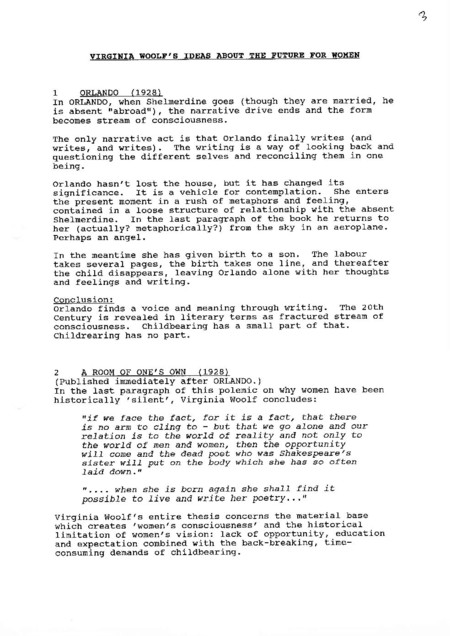

Looking at the presence of Virginia Woolf\'s novel Orlando in Potter\'s cinematic adaptation, thinking particularly about ideas of haunting and ghosting.
An aim in understanding the different steps Sally Potter took to reach the same essential meaning behind Woolf's Orlando.
Intertextuality in Orlando
Six steps of adaptation
An exploration of intertextuality in Orlando through themes of gender and identity. I have chosen this approach as the most obvious, yet complex and interesting theme in Sally Potter's and Virginia Woolf's work. Same person/Same story. No difference. Just a different sex/Just a different medium.
Exploring Intertextuality in Orlando
How does Orlando's manuscript come into being?Where does writing happen in the film and what does Orlando's manuscript mean?
The way in which the voice is used throughout the various drafts of the film to merge gender boundaries, and to transcend the traditional, biological limitations of a character's sex.
How did Sally Potter approach the task of bringing to screen the literary exploration of gender demonstrated in Virginia Woolf\'s book?
Both Virginia Woolf and Sally Potter are interested in exploring the duality of gender through the story of Orlando. Is a person's sex something that is fixed? Are men and women really that different? Perhaps gender is not something that has already been predetermined. Rather, Woolf and Potter propose that it's an ideology “that has been reinforced by tradition, inheritance and convention”. Both the novel and the film use Orlando’s sex change as an opportunity to explore and discover the answer to this issue.
Various views of Swinton's characters in the film Orlando.
Pathway to reflect upon and illustrate the process of adapting Virginia Woolf’s 1928 novel, Orlando, to film.
What is lost and what is gained?
What is lost and what is gained?
Copyright ©2025 Adventure Pictures. Some rights reserved. Non-commercial use of text and images in which Adventure Pictures holds the copyright is permitted, with attribution, under the terms and conditions of a Creative Commons BY-NC-ND License.